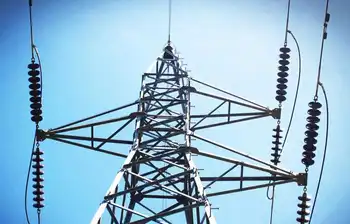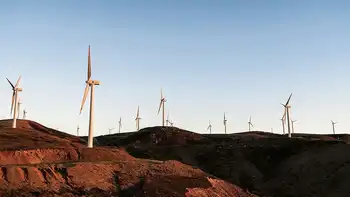Alberta approves new federal emission rules
OTTAWA, CANADA - Alberta Premier Ed Stelmach gave a passing grade to Ottawa's new plan to impose stricter emission limits on coal-fired electricity and oil sands projects, leading critics to question just how aggressive the plan actually is.
Environment Minister John Baird released proposed regulations that target Alberta's coal-based electricity system and its booming oil sands development, saying both industries will have to slash greenhouse gas emissions for projects that become operational after 2011.
Mr. Baird warned that U.S. governments - both federal and state levels - are increasingly concerned about buying fuel produced from the oil sands because of its contribution to climate change.
The minister noted that U.S. President George W. Bush recently signed legislation that could prevent the U.S. government and the Defence Department from buying from the oil sands, while states like California are making similar threats.
"The bottom line is the oil sands is an important national resource but we've got to expand it in an environmentally friendly way," he said.
The cornerstone of the federal announcement was a new emphasis on carbon capture and storage technology, in which major industries capture carbon dioxide exhaust and store it underground.
Mr. Baird said all new coal-fired power plants and oil sands projects that come on stream in 2012 or later must virtually eliminate emissions through carbon capture and storage or a combination of other abatement technology and carbon credits by 2018. "We hope to have in place a mass-scale carbon capture and storage system before - well before - 2020," he told reporters in Ottawa yesterday. "We think it's tremendously important."
In Edmonton, Mr. Stelmach said he was pleased that Ottawa was "following Alberta's lead" on regulating greenhouse gas emissions, saying there was ample flexibility in the approach and deadlines.
The Alberta Premier - who has been widely criticized for setting unaggressive emission targets - said he remained concerned that the federal plan could negatively affect the oil and gas sector.
Liberal environment critic David McGuinty said Mr. Stelmach's endorsement spoke volumes about the plan, which the Harper government has portrayed as a get-tough approach. "From a Canadian common sense perspective, people would go: 'Wait a second here. The jurisdiction with the most to lose is seizing upon this announcement and saying it's all good? Something's not right here,' " he said.
As crude oil prices were topping a record $108 (US) a barrel yesterday, the Liberal MP said existing oil sands operations should not be exempt from the plan.
Most environmentalists panned the announcement, saying loopholes make the targets less aggressive than they sound.
"Canada's ambition is a very, very long way from the message that is coming clearly from the scientific climate community about what needs to be done," said Matthew Bramley, a researcher at the Calgary-based Pembina Institute, a non-profit environmental think tank.
He said the target of reducing greenhouse gas emissions to 20 per cent below 2006 levels by 2020 is significantly above the level of the Kyoto Protocol, under which the former Liberal government committed to reducing emissions to 6 per cent below 1990 levels by 2012.
Mr. Bramley noted that British Columbia has prohibited the construction of new coal-fired power plants, while the federal plan allows them until 2012, and even then, gives utilities another six years to implement emission-reduction plans.
He added that oil companies are in the midst of a massive development, and many of the projects are slated to be completed before 2012. Those will face only modest emission targets, he said.
Stephen Hazell, the executive director of the Sierra Club of Canada, praised yesterday's announcement for setting an "ambitious" timeline for adopting new technology. Mr. Hazell said the plan is an improvement over the version released last year, which simply required new facilities to improve their emissions per barrel of oil by 2 per cent a year.
"It's good that it looks like they are going to demand that tar sands operations drastically reduce their greenhouse gases," he said. "Under the previous framework, the oil sands industry was totally off the hook."
Oil industry executives supported in principle the adoption of carbon capture and storage, and many companies are designing their plants to accommodate the technology. But Charlie Fisher, chief executive of Nexen Inc., said government money will be required.
Stephen Kaufman, a Suncor Energy Inc. executive who chaired an industry task force on carbon capture, said the federal plan would impose an undue burden on the industry.
"We think it is quite important for companies to have the flexibility to choose the technology that is right for them, and keeps them competitive on an international basis," Mr. Kaufman said.
Don Lowry, chief executive of Edmonton-based EPCOR Utilities Ltd., said his company is keen to proceed with carbon capture technology, but he questioned whether Alberta electricity users will support the enormous cost.
Related News

Electricity prices rise more than double EU average in first half of 2021
TALLINN - Estonia saw one of the highest rates in growth of electricity prices in the first half of 2021, compared with the same period in 2020. These figures were posted before the more recent, record level of electricity and natural gas prices; the latter actually dropped slightly in Estonia in the first half of the year.
While electricity prices rose 7 percent on year in the first half of 2021 in Estonia, the average for the EU as a whole stood at 2.8 percent over the same period, BNS reports.
Hungary (€10 per 100 Kwh) and Bulgaria (€10.20 per 100 Kwh)…




